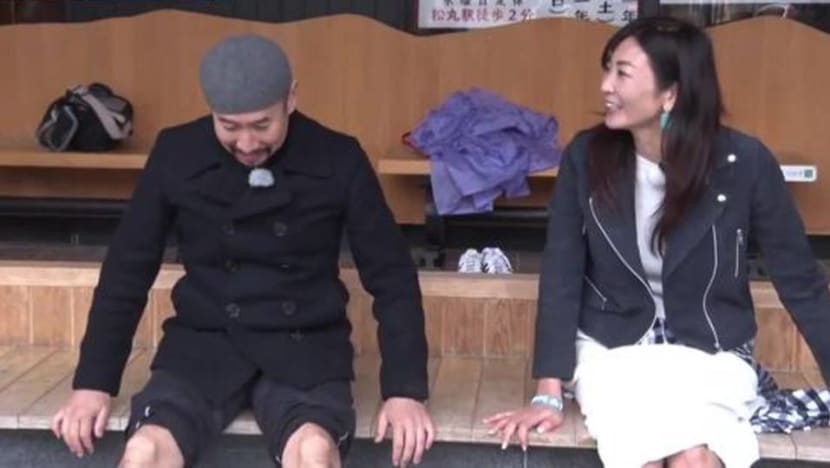Road Trip On Yodo Line - Part 1
A factory which makes Uwajima's famous jakoten fish paste, a hot spring inside a station and an aquarium which showcases the "legendary" Japanese lates fish are among this week's highlights.

Join us on a two-day journey of enquiry and discovery on the JR Yodo Line, which connects the prefectures of Ehime and Kochi. The entire line has 20 stations and spans 76.3km. We will start from Kita-Uwajima Station in Ehime Prefecture and head towards Wakai Station in Kochi Prefecture. Our aim is to visit places and restaurants recommended by the locals.
From Kita-Uwajima, our first destination is Futana Station, three stops away. We arrive at 8.15am and have until 10am to explore the area. We speak to a local who suggests we visit Mimamen Farmer's. It is owned by four farmers in their 40s who come from the town of Mima. More than five years ago, they renovated a vacant house and founded Mimamen Farmer’s to promote locally grown vegetables. They have also sold vegetables from their farm at shopping streets in Uwajima City in the past.
The head of Mimamen Farmer’s recommends we next check out Yasuoka Kamaboko, which was established in 1952. It is known for its kamaboko and jakoten, which are made using fresh fish and other ingredients from Uwajima. We go to its factory and meet the manager, Mr Yasuoka, who shows us around. Jakoten is its most popular fish paste and it is made of small white fish called Hotarujako. We get to sample some freshly fried handmade jakoten; it is crispy on the outside and fluffy on the inside. We also try jakokatsu - jakoten paste which is mixed with vegetables such as carrots, onions and burdock root and then deep fried.
We return to the station and take the train to Izume, four stations away. We drop by a cake shop called Enishi, which opened in 2010. It was recommended by another resident and is famous for its fresh cream roll cake. Its manager and owner tell us the store’s other popular items are black sesame cream puff and chestnut cake.
After this, we head to the neighbouring station, Matsumaru, on a tourist train called Shiman Torocco. The train runs along Hiromi River, the largest tributary of the Shimanto River. We reach Matsumaru Station in less than 10 minutes, at 12.25pm. The next train is at 4.25pm. We go to a free foot bath nearby to soak our tired feet. Here, we find out from a local that there is a hot spring inside the train station, Morinokuni Poppo Onsen. It has a rock bath with a waterfall, as well as an open-air bath with a great view.
Later, we walk around the station and ask the local residents for lunch suggestions. One of them mentions Tommy, a local cafe which has been around since 1972. It serves a variety of dishes such as okonomiyaki and many types of pasta. We order the Napolitan, which has colourful vegetables and a thin omelette below the pasta. Its popular okonomiyaki is served on an iron plate and cut into bite-sized pieces.
We plan to head to Ekawasaki next so ask the restaurant staff about places where we could spend the night. We are told about Seira Shimanto. We call the hotel and manage to make a reservation but since it was a last-minute booking, dinner will not be served.
There is still time before our train from Matsumaru leaves at 4.25pm. We want to look for Japanese lates, a “legendary” fish usually found in Shimanto River. We walk to the Osakanakan aquarium in a roadside station at Matsuno Town. Here we get to see many Japanese lates. Their numbers have dropped significantly in recent years. The area around the mouth of the Shimanto River is one of their habitats.
After this, we travel by train to Ekawasaki Station. It is four stops away and our last destination of the day. This time, we ride on a bullet-shaped train inspired by the first “0 Series” bullet train which was launched in 1964. This train along the JR Yodo Line has been operating for more than five years. It runs along the river and enters Kochi Prefecture. We arrive at Ekawasaki Station in 20 minutes. As dinner is not provided at Seira Shimanto, we start looking for a place to eat.
A local we meet mentions a Japanese pub called Minya. It opened more than 10 years ago and serves Shimanto specialities. We order sea lettuce tempura, grilled sweetfish from Shimanto River, jakoten and deep-fried Yamato shrimps.
Tips:
1) Jakoten is a must-try speciality of Uwajima
2) Shimanto River is known for its “legendary” fish called Japanese lates










